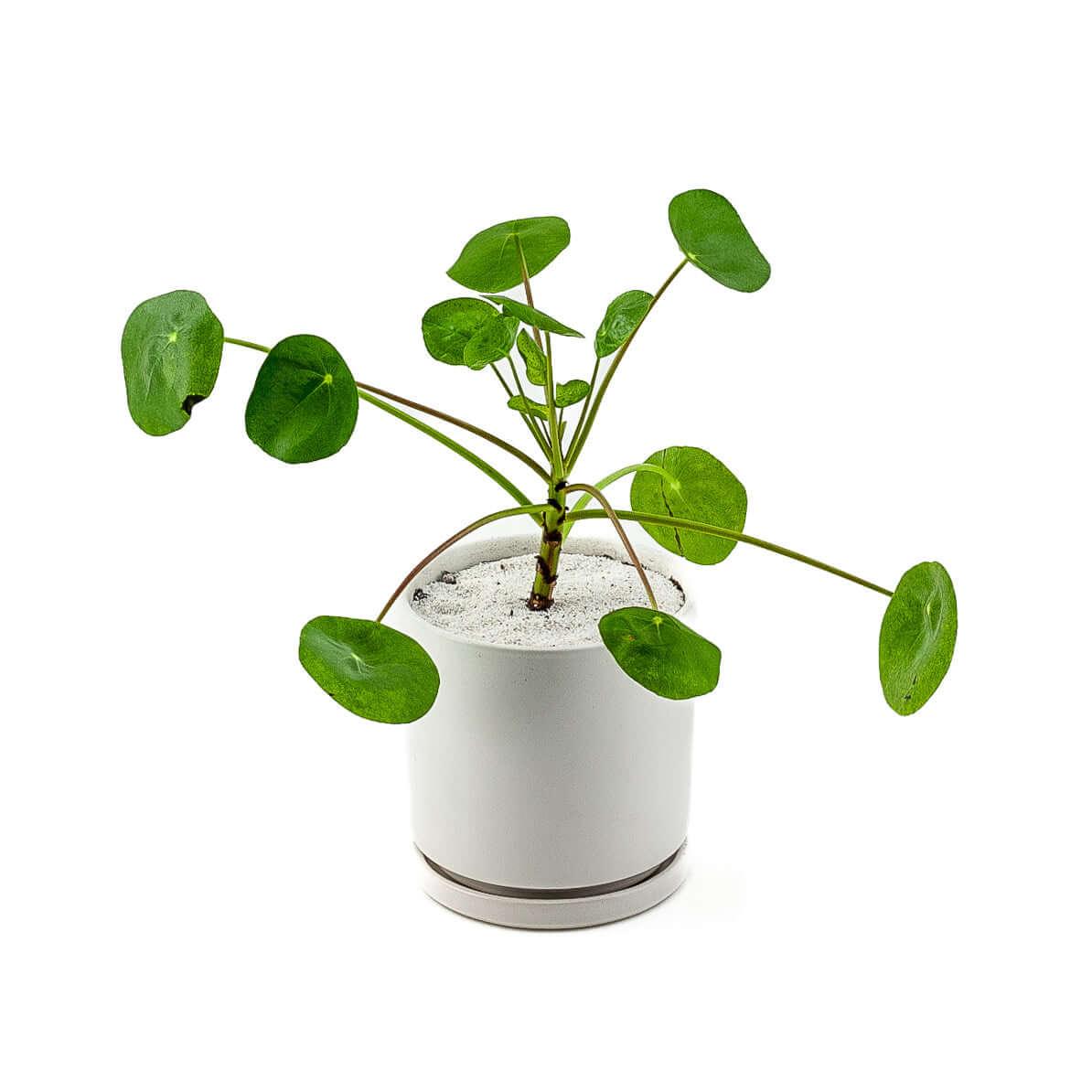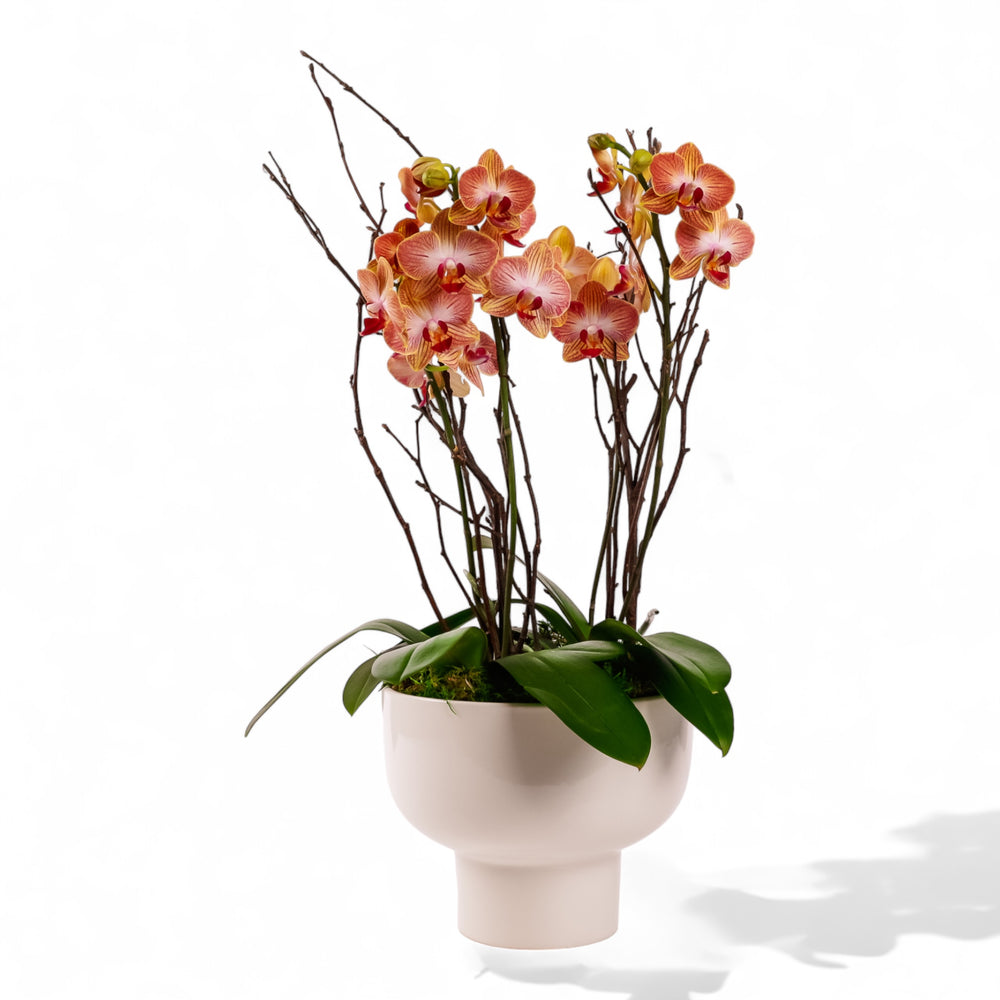Our Guarantee
Receive a refund or replacement product if your not completely satisfied.

San Diego Pilea Peperomioides Guide
The Pilea Peperomioides (pronounced “Pie-lee-uh”) has taken social media by storm, with the hashtag #pilea garnering hundreds of thousands of posts on platforms like Instagram. Known as the friendship plant, Chinese money plant, or pancake plant, this unique houseplant is loved by plant enthusiasts everywhere. San Diego’s plant-loving community is no exception, with its ideal climate for fostering indoor greenery. But what is it about the Pilea that makes it so popular among San Diego plant lovers?

Why Pilea is Perfect for San Diego Plant Lovers
The Pilea Peperomioides has become a favorite in Southern California, particularly in San Diego, due to its whimsical appearance and reputation for bringing good fortune. With dancing stems and round, coin-shaped leaves that seem to float at the ends, this plant adds a playful, exotic touch to any room. Its allure of attracting good fortune, wealth, and abundance makes it a delightful addition to both homes and offices, appealing to those who appreciate both beauty and symbolism.
Available at Green Fresh Florals in decorative ceramic pots or as a nursery pot option, Pilea is the perfect plant for anyone wanting to bring a touch of luck and greenery into their space. This versatile plant fits right into San Diego’s laid-back, stylish decor styles and makes a fantastic gift for friends and family.
The San Diego Sunlight and Your Pilea
Pilea thrives with indirect sunlight, making it ideal for indoor locations throughout San Diego. Place your Pilea near an east- or north-facing window where it can enjoy bright, indirect light without the risk of harsh afternoon rays, which can be more intense here in Southern California. Consider using a sheer curtain to filter the sunlight if your home is particularly bright, or rotate your plant weekly to ensure even growth.
One of the perks of San Diego’s climate is the abundance of natural light, which the Pilea will love – just remember to keep it out of direct sun exposure to avoid leaf burn.
Watering Your Pilea in San Diego’s Mild Climate
Overwatering is the most common mistake made with Pilea plants. Due to San Diego’s dry spells and mild year-round weather, you might need to adjust your watering routine based on seasonal changes. Generally, watering once a week works well, but in the warmer months, you may need to check the soil more often as it dries out faster.
Pro tip for San Diego plant lovers: If the top ½ to 1 inch of soil feels dry, it’s time to water. For a thorough soak, place the pot in a shallow dish of water and allow it to absorb from the bottom. Avoid watering the leaves directly to prevent fungal issues, which can occur in San Diego’s sometimes-humid coastal areas.

Choosing the Right Pot for Your Pilea
Selecting the right container is essential for keeping your Pilea happy and healthy. We recommend terra cotta pots for their breathability, which helps the soil dry out faster if it gets overwatered. You can find a variety of terra cotta and decorative pots at Green Fresh Florals, allowing you to combine functionality with style.
For those looking for added aesthetic appeal, our Gemstone Potted Pilea comes in a beautifully crafted pot that complements the plant’s unique charm. If you prefer to transplant your Pilea, choose a pot with drainage holes to prevent root rot, which can be especially helpful in San Diego’s moist coastal areas.
Spread the Love: Propagating Pilea Babies in San Diego
One of the joys of owning a Pilea is its natural tendency to produce “babies,” or new shoots, that can be easily propagated. In San Diego’s mild spring season, you’ll find that propagation is particularly successful, as this is when growth rates peak. Simply cut off the shoots once they are at least 2 inches tall, and plant them directly into soil or place them in water to encourage root development.
Whether you’re adding to your collection or gifting a baby Pilea to a friend, propagation is a wonderful way to share the plant’s beauty and good fortune. Green Fresh Florals can provide a range of pots for planting new Pilea babies, making it easy to spread the Pilea love throughout San Diego. But don’t just use your drinking glass as a propagation vase when you can showcase your green thumb with a stylish propagation vase from Green.
The Best Soil for Your Pilea in San Diego
Using the right soil mix is key to helping your Pilea thrive. Plant enthusiasts in San Diego should choose a well-draining potting mix combined with perlite, which allows roots to breathe and prevents waterlogging. If you need help with soil selection or repotting, our plant specialists at Green can answer your questions and offer resources to guide you in creating the ideal growing environment for your Pilea.
Bringing Instagram Fame to Your San Diego Pilea
Once your Pilea is settled and thriving, it’s time to share its beauty with the world! Capture its whimsical, round leaves and tag your photos with #Pilea, #plantsofinstagram, and #sandiegoplants to connect with other San Diego, and global, plant lovers. Join the community of enthusiasts who admire and share this delightful plant.
If you’re looking for a vibrant, unique plant that brings both aesthetic appeal and good fortune, the Pilea Peperomioides is a perfect choice. Green Fresh Florals offers Pilea in both decorative pots and nursery pots, giving you flexibility to find the perfect fit for your home or gift. Plus, our collection of pots and planters lets you style your Pilea in any way you choose, making it a statement piece in any room.
By following these tips tailored for you San Diego home, your Pilea can become a healthy and eye-catching feature of your indoor plant collection. Visit Green Fresh Florals & Plants to grab your own Pilea and enjoy the beauty and charm of this iconic plant in the perfect pot for your space!






